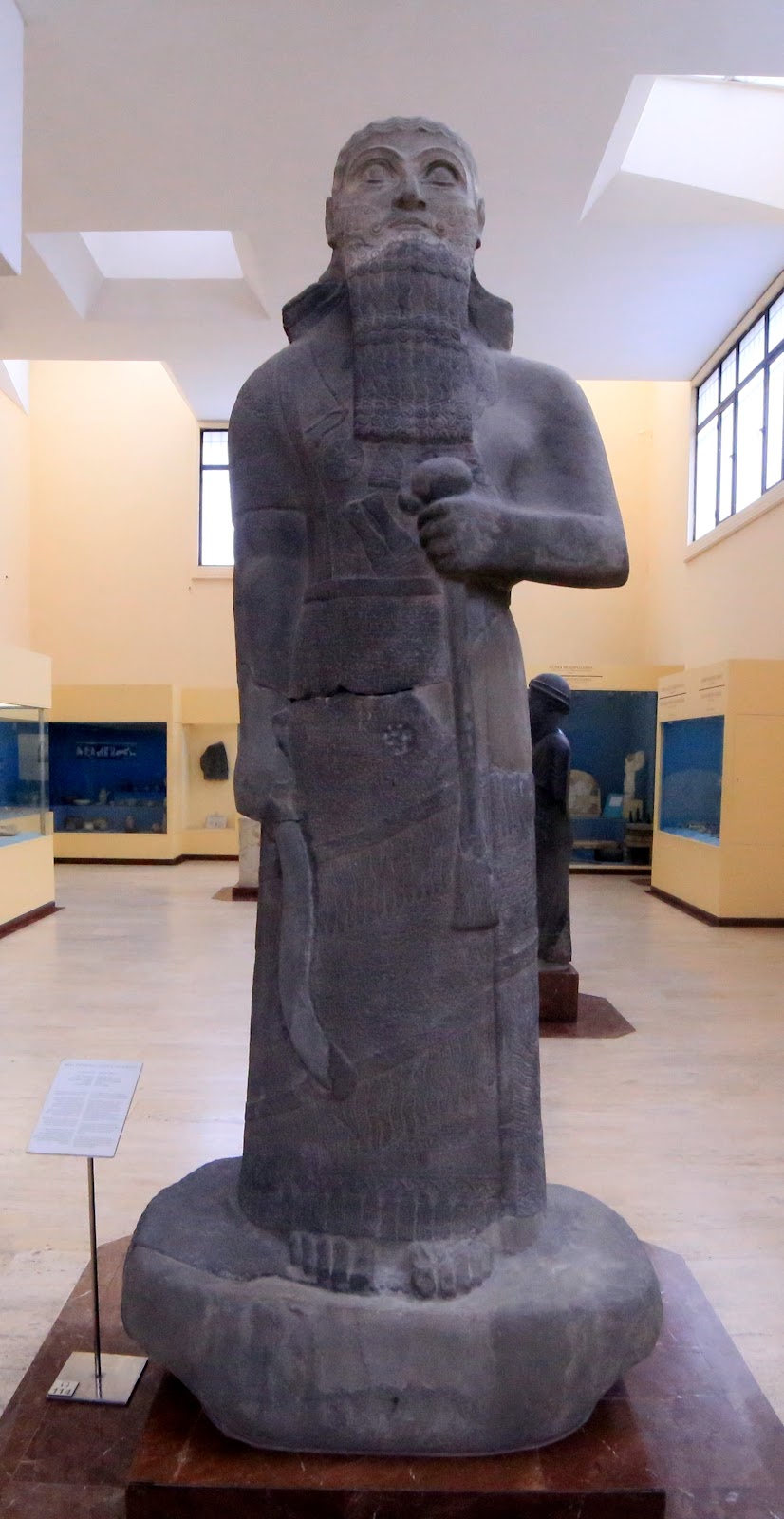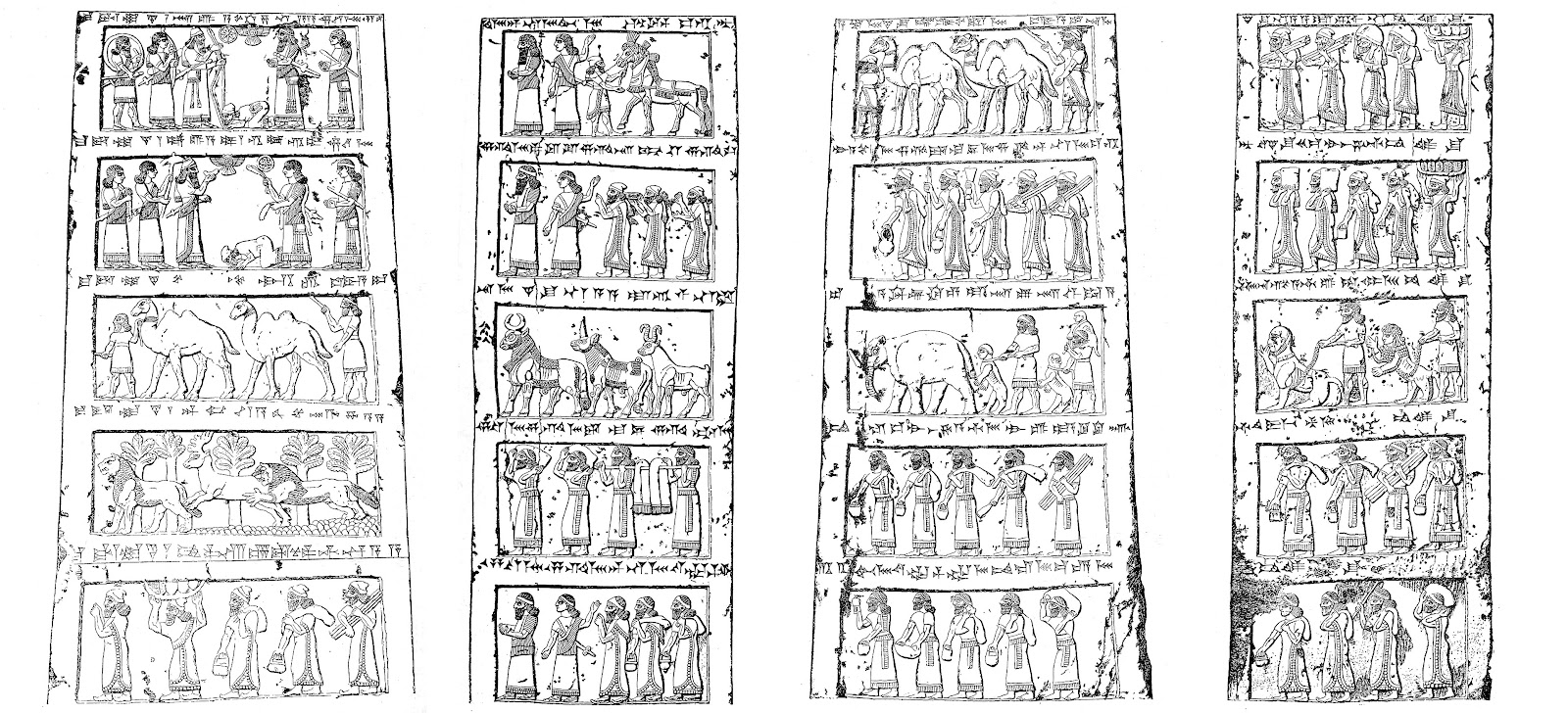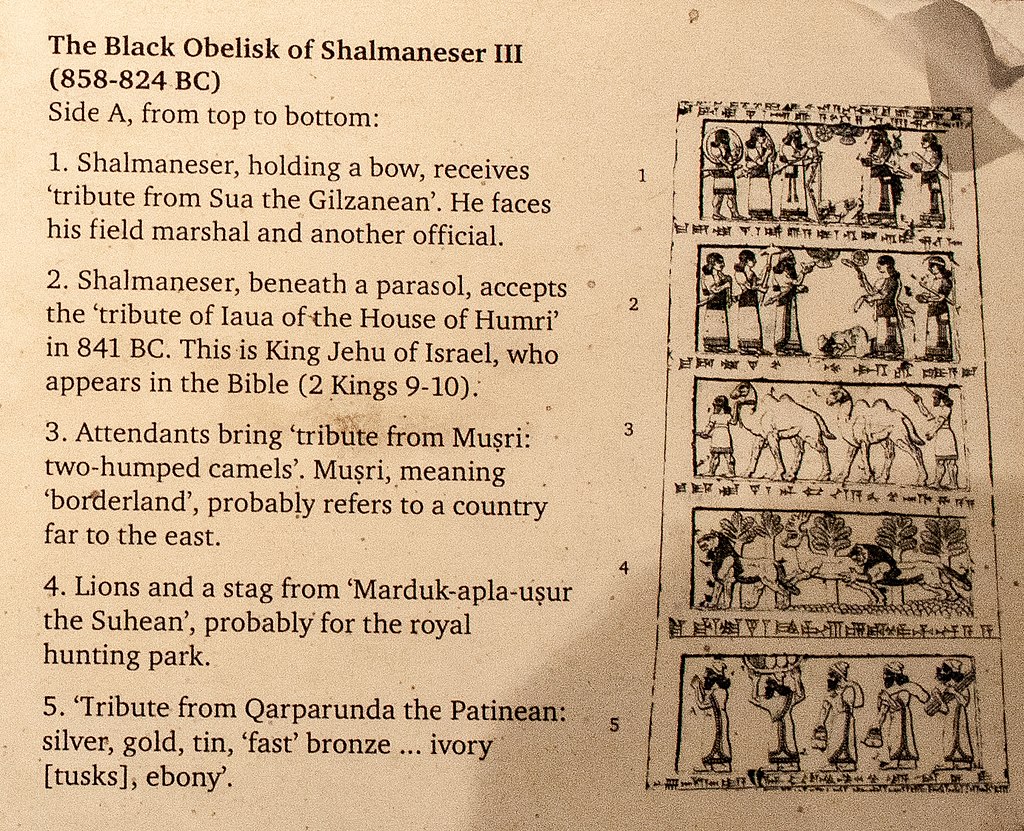Salvete Omnes,
 |
| king Shalamanser III, son of Ashurnasirpal II, king of Assyria, ruled from 859-824BC |
a little trip into the depths of the Western Asia during the early Iron Age, when Assyrian kings and their warriors dominated and told that world about their conquests and grandeur through monumental art and inscriptions.
the martial and equestrian art & history connected to the Neo-Assyrian king Shalmaneser III and his conquests I have already presented on my blog.
Today we will visit the so called Black Obelisk, from the British Museum collections, when British subjects uncovered, pillaged and bought old art from many ancient but often forgotten locations.
The Obelisk or stela, from 1846AD in the British possession, came from the Neo-Assyrian Kalhu (Nimrud, near present day city of Mosul) where sir Austen H. Layard discovered this obelisk there during his voyages (you can listen to his own writings about his explorations in Niniveh and Babylon on Librivox).
and shows the triumphal reception of many processions of various vassals and tribute bearers, showing obeisance to the Assyrian king and his court in his 31 year of campaigning and waging power from the land of Assur.
Among them we have a horse from Gilzanu brought by Gilzanean delegation led by Sua, the king - older article on Gilzanu here. Already at the end of the Bronze Age Assyrian sources mentioned Gilzanu (in present Iran) as the area where they got horses, by tribute and commercial exchanges. During the period of of early Neo-Assyrian empire this Gilzanu region/kingodm has been associated with the sites in Northern Iran, among them there is one tepe (hill) known as Hasanlu in the Gadar River valley in the Zagros Mountains (shared nowadays between Iran, Iraq and Turkye). In the stela king had the tribute specified to have been horses trained to harness (chariot horses) and donkeys.
 |
| the led by a groom horse seem to have some sort of an armor covering his, it is a stallion, throat, neck and chest |
 |
| with a bow in his hand great king Shalmaneser III receives obeisance from Sua, ruler of Glizanu |
a close up onto the Bactrian Camels, also from Gilzanu
The Black Obelisk is also famous because it shows a royal personage from the Biblical scriptures, namely a member of the Omrid* dynasty from his capital Samaria, Kingdom of Israel, king Jehu - more links to interesting articles enclosed below. |
| prostrated king Jehu son of Omri showing obeisance to Shalmanaser III |
 |
| Jehu's tributary procession |
 |
| the Black Obelisk aka stela in the British Museum |
ps
Polish historian prof. Lukasz Niesiolowski-Spano of the Department of History, Warsaw University - his academia page - sees Omri as the first king of Israel, while he also wrote a fascinating article about David, the historical figure and the king of Hebrew Bible.
Valete









2 comments:
the war in the Holy Land is terrible, and the current mayhem and slaughter are just so terrible - may peace finally rule in those land -
Wyklad profesora Niesiolowskiego-Spano o Dawidzie historycznym - https://www.youtube.com/watch?v=Fa0zdldakbs
Post a Comment